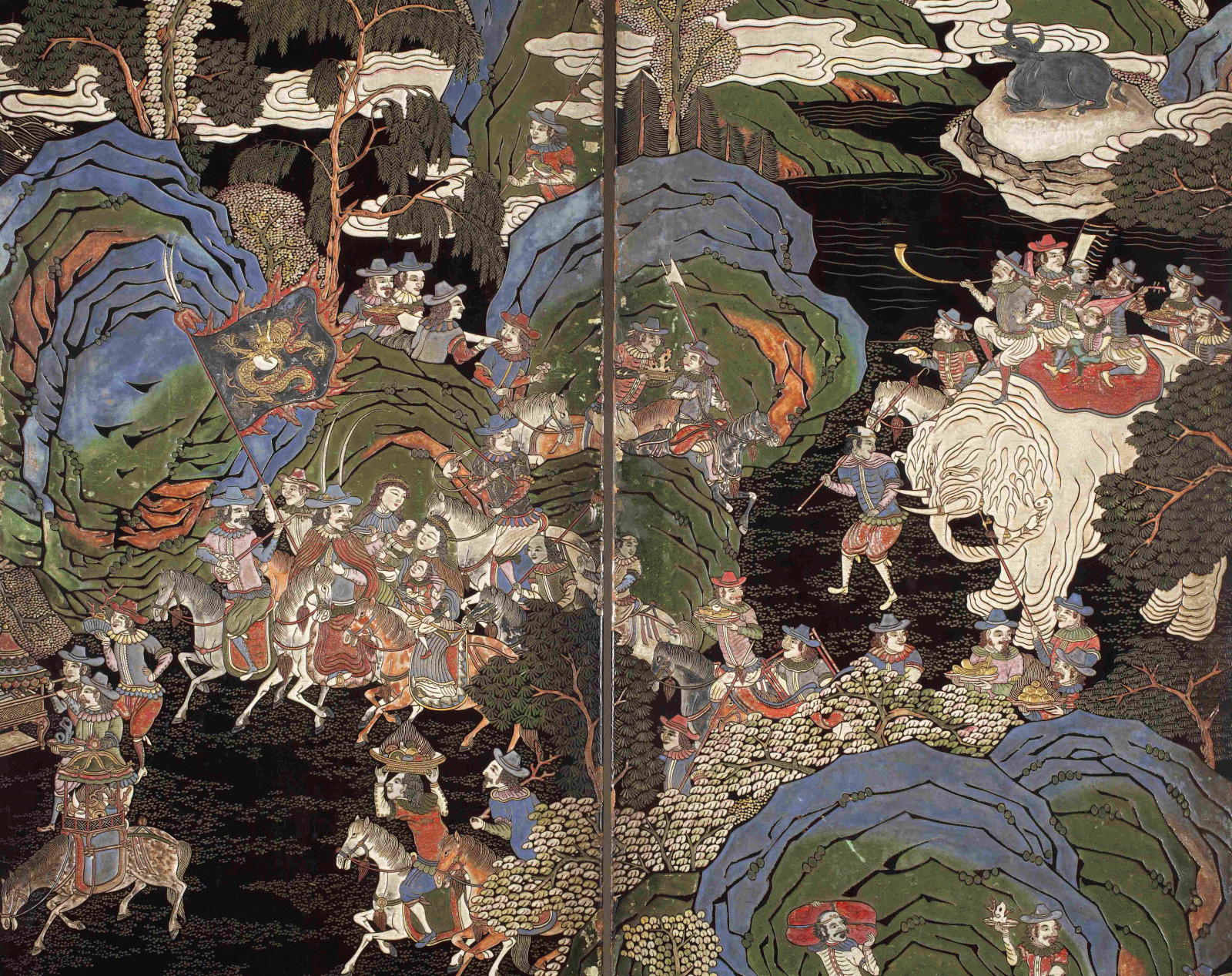Lecture
Lianming Wang:
Transoceanic Trade Repictured: Coromandel Lacquer Screen and the Mobile Image in Global Exchange

The Dutchmen Paying Tribute, Coromandel lacquer screen, detail, 267-583 cm, before or around 1700. Copenhagen: National Museum of Denmark, Inv.no. Bc. 1260.
This talk responds to the ingenious concept of the ‘image vehicle’ (Bilderfahrzeuge) coined by Aby Warburg, highlighting its potential and valence for studying the global migration of the image. Departing from a Coromandel lacquer screen with the portrayal of the Dutch paying tribute, now kept in the National Museum of Denmark, the discussion centers on the recurring theme of the transoceanic tributary trade found on a wide array of material surfaces. In so doing, this talk first elaborates the entangled histories of the monumental mobile supports participated in this dynamic process of transfer, their spatial engagement in the interior, and the targeted audience. Particular interest will be paid to the intermediate role of the ‘Coromandel lacquer screen’ between the Japanese Nanban screen, the Qing wall-affixed hanging, the Chinese export painting, and the Korean painted screen. In a global and transcultural context, as this talk argues, the emulation of a pictorial archetype through existing techniques and mediums is always essential for migrating images. Following the Warburgian concept, in a metaphorical sense the material body of the ‘vehicle’ thus needs to be ‘upgraded’ accordingly. Further, its mobility is complicated and conditioned by the entwinement of the content of the image, its technical particularities and the replicability of the medium that formed the basis of early modern commercial competition between China, Japan, Korea and Europe.
Lianming Wang specializes in Global Art History with a particular interest in the Sino-European encounter of arts and culture in early modernity and artistic practices. Currently, he is visiting the Kunsthistorisches Institut in Florenz – MPI with a project on “Transgressive Animals, Territorial Locality, and Qing Global Histories”. Prior to that, Wang taught East Asian Art History at the University of Würzburg and the University of Heidelberg, and was an Art Histories Fellow in the Research Group “Art Histories and Aesthetic Practices,” at the Berlin-based Transregional Studies Forum. He is the author of Jesuitenerbe in Peking. Sakralbauten und transkulturelle Räume, 1600–1800 (Winter Verlag, 2020) and the co-editor (with Sarah E. Fraser and Mio Wakita) of Women and Cross-Media: East Asian Photography, Prints, and Porcelain from the Dresden State Art Collection (Heidelberg University Library, arthistoricum.net, 2022).
01 February 2022, 3:00pm
If you would like to participate, please register here to receive the Zoom link: https://zoom.us/meeting/register/tJIrf-uhrT0jG9fjNh1cmu3nErqMFolkcIZL
Notice
This event will be documented photographically and/or recorded on video. Please let us know if you do not agree with the Kunsthistorisches Institut in Florenz using images in which you might be recognizable for event documentation and public relation purposes (e.g. social media).


